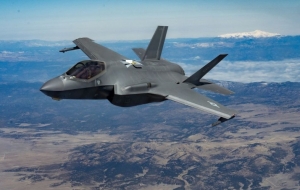Titanium’s Secret War: Could Vale Be Eyeing Labrador’s Radar Project?
Story By Skeeter Wesinger
September 16, 2025
In the far reaches of Labrador, where winter stretches nine months and the land is as harsh as it is resource-rich, a junior exploration company says it may have stumbled onto one of North America’s most significant new sources of titanium. Saga Metals’ Radar Project has been promoted as road-accessible, near a port, an airstrip, and hydro power. But critics argue that in reality, it’s hell and gone from anywhere.
And yet, despite the challenges, whispers are circulating: could mining giant Vale already be circling?
Titanium is no longer just for aerospace engineers and medical implants. It’s the quiet backbone of 21st-century warfare: drones, hypersonic missiles, stealth fighters. The U.S. imports over 90% of its titanium feedstock, largely from Russia, China, and Kazakhstan. That dependency has become a glaring weakness at a time when defense spending is surging past $1 trillion. For Washington policymakers, securing a domestic or friendly-jurisdiction supply of titanium isn’t just an economic issue. It’s a national security imperative.

The F-35 is America’s military advantage.
Vale already has a commanding presence in Newfoundland and Labrador through its Voisey’s Bay nickel-copper-cobalt mine and Long Harbour hydromet plant. Those assets anchor Vale to the province, with billions already invested and deep relationships built with government and Indigenous stakeholders. So if Labrador is being positioned as a titanium-vanadium corridor — with Saga’s Radar Project next to Rio Tinto’s long-running Lac Tio mine — wouldn’t Vale at least be curious?
Officially, Vale has said nothing. But that silence may say less about disinterest and more about timing. Mining majors rarely move at the exploration stage. They let juniors burn cash and prove up a resource. Only once grades, tonnage, and metallurgy are de-risked do they swoop in with capital and scale. The Radar site is remote, snowbound most of the year, and would require major road, port, and power upgrades to reach production. Vale is focused on nickel and copper, metals tied to electrification and EVs, but vanadium — with its growing role in grid-scale batteries — could give them a reason to pay attention.
What if the U.S. or Canada starts subsidizing titanium development the way they did rare earths or semiconductors? That would change the math overnight. Vale, with its capital, processing expertise, and political weight, could then step in as a consolidator. It wouldn’t be the first time a major stayed quiet until the subsidies hit.
Saga’s drill results have been splashy — magnetometer readings that “maxed out the machine,” multi-metal mineralization, comparisons to China’s massive Panzhihua deposit. For now, it’s still a speculative story. But the gravity of titanium demand is real. And if Labrador is destined to become a titanium hub, Vale is already in the neighborhood.
It’s easy to dismiss Saga’s Radar Project as another hyped junior play, complete with glossy investor decks and paid promotions. But it’s also easy to forget that the world’s mining giants often wait in the wings, letting the market underestimate projects until the timing is right. In a world where titanium has become the metal behind drones, jets, and modern defense, ignoring Labrador’s potential may not be an option forever.

Leave a Reply
Want to join the discussion?Feel free to contribute!